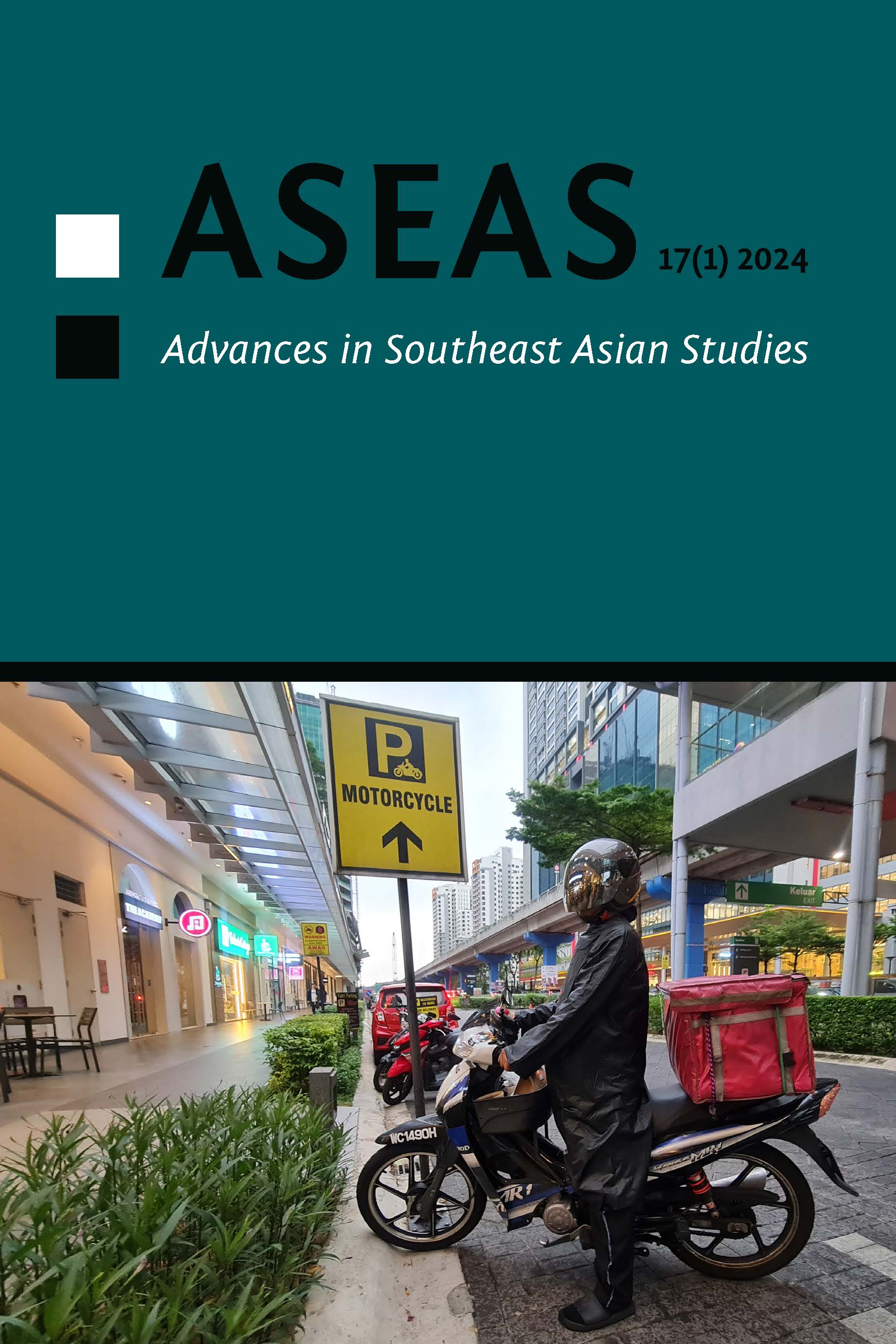Book Review: Kramer, E. A. (2022). The Candidate’s Dilemma. Anticorruptionism and Money Politics in Indonesian Election Campaigns.
DOI:
https://doi.org/10.14764/10.ASEAS-0108Abstract
-
References
Aspinall, E., & Sukmajati, M. (Eds.). (2016). Electoral dynamics in Indonesia: Money politics, patronage and clientelism at the grassroots. NUS Press.
Goffman, E. (1959). The presentation of self in everyday life. Doubleday & Company.
Goffman, E. (1970). Strategic interaction. University of Pennsylvania Press.
Hadiz, V. R. (2012). Democracy and money politics: The case of Indonesia. In R. Robison (Ed.), Routledge handbook of Southeast Asian politics (pp. 71-82). Routledge.
Hadiz, V. R. (2005). Dinamika kekuasaan: Ekonomi politik Indonesia pasca-Soeharto. LP3ES.
Hidayat, S. (2009). Pilkada, money politics and the dangers of “informal governance” practices. In M. Erb & P. Sulistiyanto (Eds.), Deepening democracy in Indonesia?: Direct elections for local leaders (Pilkada) (pp. 125-146). ISEAS Publishing.
Indrayana, D. (2017). Money politics in a more democratic Indonesia: An overview. Australian Journal of Asian Law, 18(2), 1-15.
Juwono, V.(2018). Melawan korupsi, sejarah pemberantasan korupsi di Indonesia 1945-2014. Gramedia.
Lubis, M. (1982). Budaya, masyarakat dan manusia Indonesia. Himpunan catatan kebudayaan di majalah horison. Yayasan Obor Indonesia.
Materay, K. (Ed.). (2022). Demokrasi, HAM, antikorupsi bung hatta. Bung Hatta Anti-Corruption Award.
Mukti, H. H., & Rodiyah R. (2020). Dynasty politics in Indonesia: Tradition or democracy? Journal of Law and Legal Reform, 1(3), 531-538.
Winters, J. (2011). Oligarki. Gramedia.
Downloads
Published
Issue
Section
License
Copyright (c) 2024 Herdi Sahrasad

This work is licensed under a Creative Commons Attribution-NonCommercial-NoDerivatives 4.0 International License.
For all articles published in ASEAS before December 2014 and after July 2022, copyright is retained by the authors. For articles published between January 2015 and June 2022, the Society for South-East Asian Studies (SEAS) is the copyright holder. Articles published in ASEAS before December 2019 are licensed under the following Creative Commons License: Attribution-NonCommercial-NoDerivs 3.0 Unported. Articles published after that date are licensed under the following Creative Commons License: Attribution-NonCommercial-NoDerivs 4.0 International. In both cases, this means that everybody is free to share (to copy, to distribute, and to transmit the work) under the following conditions:
-
Attribution — You must give appropriate credit, provide a link to the license, and indicate if changes were made. You may do so in any reasonable manner, but not in any way that suggests the licensor endorses you or your use.
-
NonCommercial — You may not use the material for commercial purposes.
-
NoDerivatives — If you remix, transform, or build upon the material, you may not distribute the modified material.


